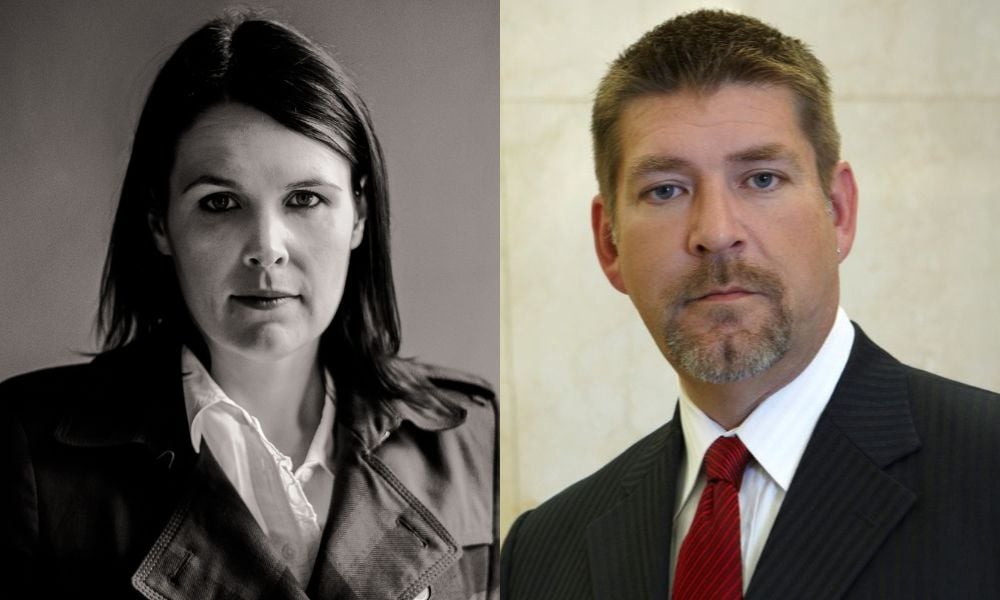
Court rearticulated section-12 analysis, and resisted calls to change the test, says lawyer

In twin rulings dealing with two mandatory-minimum-sentencing laws, the Supreme Court of Canada has struck one and ruled another constitutional.
Friday morning, the SCC released its decisions in R. v. Hills and R. v. Hilbach, which both concerned mandatory minimum sentences for gun-related offences. In Hillis, the court found s. 244.2(3)(b) of the Criminal Code, which carried a four-year mandatory minimum sentence of imprisonment, to be unconstitutional and of no force or effect. In Hillbach, the court found that the four- and five-year mandatory minimums for robbery with a firearm and robbery with a prohibited firearm were not grossly disproportionate and did not constitute cruel and unusual punishment.
In Hills, the result was eight-to-one, with Justice Suzanne Côté in dissent. In Hillbach, Justices Andromache Karakatsanis and Mahmud Jamal dissented.
In both cases, the defendants had challenged their mandatory minimum penalties under s. 12 of the Charter, which guarantees the “right not to be subjected to any cruel and unusual treatment or punishment.”
In Hills, the SCC rearticulated the s. 12 analysis and rejected calls to change the test, says Heather Ferg, a lawyer at McKay Ferg LLP who represented Jesse Dallas Hills.
“[The court] confirmed the approach must reflect how human dignity is at stake (and potentially compromised) by state sanctioned punishments. Delineating the nuances of what constitutes ‘cruelty’ in a free and democratic society is critically important.”
Ferg adds that the “continued use of reasonably foreseeable cases as an analytical tool ensures the law is just and protects all Canadians.”
In Hills and Hillbach, the SCC repudiated the suggestion from Alberta's Court of Appeal that the court should do away with all its previous s. 12 jurisprudence, says Paul Moreau, an Edmonton criminal defence lawyer who acted for Hillbach.
"They both said that... all this Supreme Court jurisprudence on s. 12 is all wrong, it's crazy, it brings the administration of justice into disrepute, and Canadians don't have any faith in the justice system because of this."
"The court, in the decision of Justice [Sheilah] Martin, is saying 'No. We don't accept that any of that is true. Our s. 12 jurisprudence is lengthy in history, well reasoned, soundly established, and recently reaffirmed in [R. v. Bissonnette]."
The SCC added a "little bit" to the s. 12 jurisprudence and reaffirmed its "trend and direction," says Moreau.
To assess whether the penalties violate s. 12 of the Charter, the SCC used a “two-stage inquiry.” In the first stage, the court considered what would be “fit and proportionate sentence having regard to the objectives and principles of sentencing.” In the second, the court examined whether the penalties are “grossly disproportionate, not merely excessive, to the fit and proportionate sentence.”
Courts can execute this inquiry on the basis of the offender before the court, or with a hypothetical offender in a “reasonably foreseeable” case. If the mandatory minimum penalty is grossly disproportionate in either case, it is a violation of s. 12.
In Hills, the majority laid out three components to assess when determining gross proportionality. The first is the “scope and reach” of the offence, where the court analyses “to what extent the offence’s mens rea and actus reus capture a range of conduct as well as the degree of variation in the offence’s gravity and the offender’s culpability.”
The second component is an examination of the effect of the penalty on the offender, where it follows from “the principle of proportionality” that where the impact is greater on a particular offender, a sentence reduction may be appropriate.
The last component asks whether the mandatory minimum penalty goes beyond what is necessary to achieve “Parliament’s sentencing objectives relevant to the offence,” keeping in mind “the legitimate purposes of punishment and the adequacy of possible alternatives.”
In Hills’ s. 12 inquiry, he substituted his own offence – firing a gun at a house – with the hypothetical scenario of someone shooting a BB gun or paintball gun at a house. The court deemed this scenario “reasonably foreseeable,” noting that expert evidence stated that “numerous” air-powered guns on the market meet the Criminal Code definition of a firearm but would not be able to penetrate the wall of a house. Four-years’ imprisonment for such an act qualified as grossly disproportionate, said the majority.
Justice Côté said she agreed with the majority on the affirmation of the two-step s. 12 inquiry but disagreed with the majority’s “attempt to clarify the established framework through a new three-part test for gross disproportionality,” referring to the three components in the second stage of the inquiry.
According to Côté, the reasonably foreseeable, hypothetical scenario that persuaded the majority was not a legitimate stand-in for a s. 244.2(1)(a) offence. The idea of a person shooting an air-powered rifle at a house was “crafted primarily on the offence’s actus reus,” but would not include the “requisite mens rea.” The offender in the hypothetical situation would not turn their mind to the “presence of occupants, and the corresponding risk to lives or safety,” and is not committing the same type of “highly dangerous and culpable conduct,” she said.
Another important aspect of the case was the “clear recognition” of the “profound and potentially devastating impact of incarceration,” says Ferg.
“Conditions of incarceration can vary wildly. The court specifically noted that the conditions of incarceration may be relevant to whether a punishment is proportionate and re-iterated long standing concerns about the disproportionate impact of incarceration on marginalized groups.”